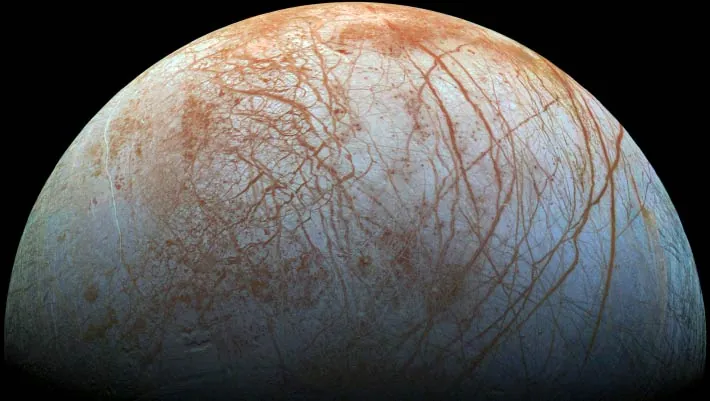
Groundbreaking Research Unravels the Secrets of Tides on Celestial Bodies – What It Means for the Search for Alien Life!
2024-11-07
Author: John Tan
In a significant advancement for planetary science, a collaborative team from the Lunar and Planetary Laboratory at the University of Arizona, TU Delft, and Caltech has unveiled a revolutionary method to analyze the impact of tidal forces on the inner workings of planets and their moons across our Solar System. This research is particularly focused on celestial bodies with irregular, non-spherical structures, providing insights that could reshape our understanding of these fascinating worlds.
Body tides are essentially the deformities experienced by celestial bodies as they interact gravitationally with other nearby masses. Picture the immense pull that Jupiter exercises on its intriguing moon, Europa. Because Europa’s orbit is elliptical rather than circular, the gravitational squeeze from Jupiter fluctuates dramatically, generating substantial internal heat within the moon. This heating process is crucial since it can support a hidden ocean of liquid water beneath Europa's icy crust—a tantalizing hint at potential extraterrestrial life.
As highlighted by Dr. Alexander Berne, a key researcher at Caltech, similar tidal heating phenomena are observed on Saturn's moon Enceladus, which possesses an ice shell that is surprisingly asymmetric compared to Europa. Such tidal dynamics play a critical role in the thermal evolution and habitability of these moons, making them primary candidates in the quest for life beyond Earth.
The team's findings reveal that the asymmetric nature of these bodies leads to more complex tidal responses than previously understood. For instance, it was observed that variations in a celestial body’s viscosity—its resistance to deformation—significantly influence the distribution of tidal heating. This heating unfolds irregularly, affecting not only how these moons evolve but also where they might harbor life-sustaining environments.
"Understanding the tidal response of bodies like Mercury, Earth's Moon, and Io shows that the amplitude of tidal signals can reach up to 10% of their main responses," the researchers noted. For more substantial bodies like Europa, Ganymede, and Enceladus, the discrepancies in shell thickness can generate additional tidal signals, impacting how we interpret the geological activity that may support life.
These pivotal observations set the stage for exciting future missions, such as Europe’s BepiColombo and JUICE (JUpiter ICy moons Explorer), which are expected to gather invaluable data on these tidal responses and enhance our understanding of their geological activities.
The riveting implications of this research not only deepen our knowledge of tidal mechanics in our Solar System but also potentially identify the regions most conducive to life on other celestial bodies. With the mysteries of Europa and Enceladus beckoning, scientists are closer than ever to answering the age-old question: Are we alone in the universe?
Stay tuned as we continue to follow these developments that could redefine our understanding of life beyond our planet!



 Brasil (PT)
Brasil (PT)
 Canada (EN)
Canada (EN)
 Chile (ES)
Chile (ES)
 España (ES)
España (ES)
 France (FR)
France (FR)
 Hong Kong (EN)
Hong Kong (EN)
 Italia (IT)
Italia (IT)
 日本 (JA)
日本 (JA)
 Magyarország (HU)
Magyarország (HU)
 Norge (NO)
Norge (NO)
 Polska (PL)
Polska (PL)
 Schweiz (DE)
Schweiz (DE)
 Singapore (EN)
Singapore (EN)
 Sverige (SV)
Sverige (SV)
 Suomi (FI)
Suomi (FI)
 Türkiye (TR)
Türkiye (TR)